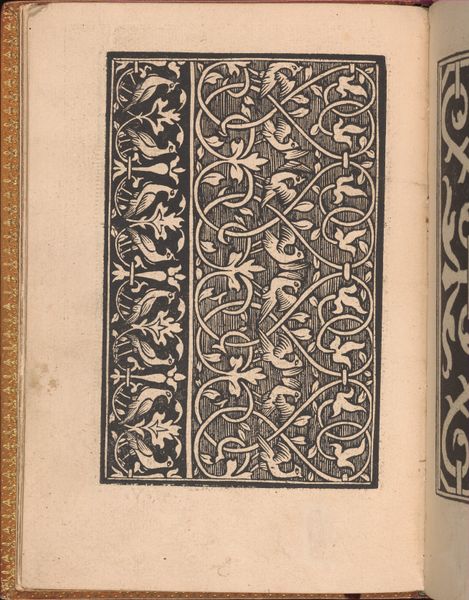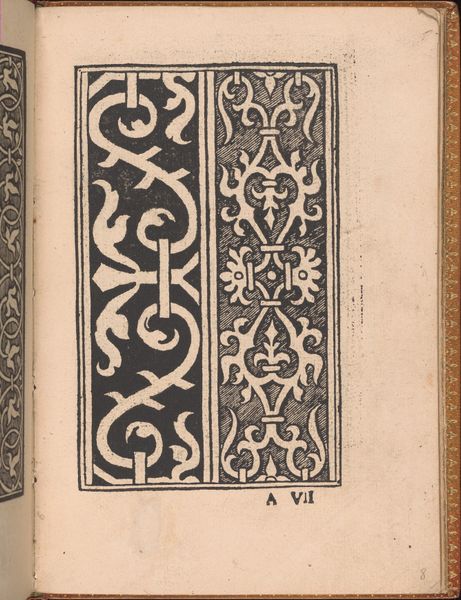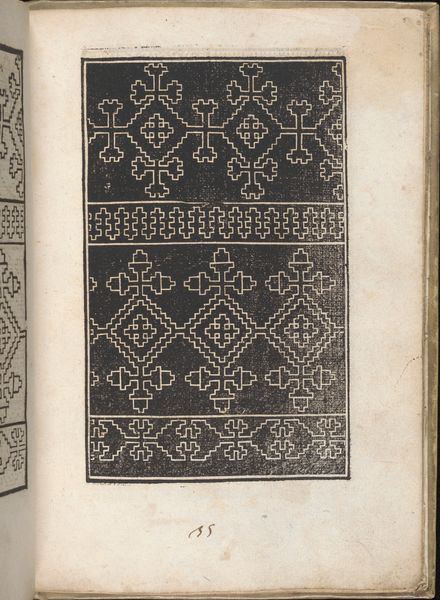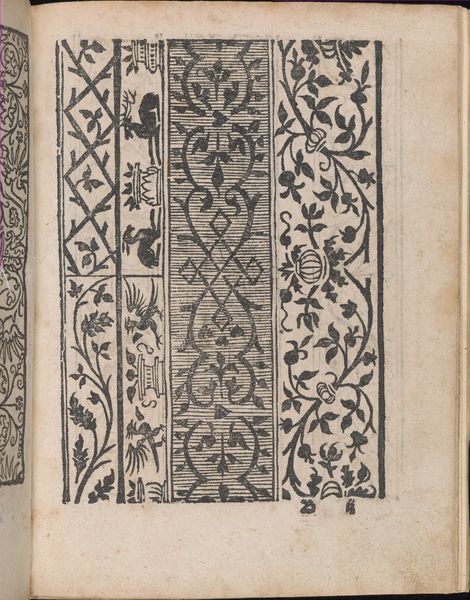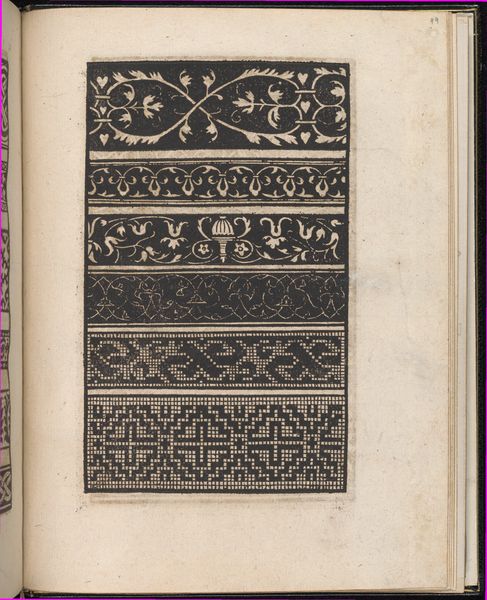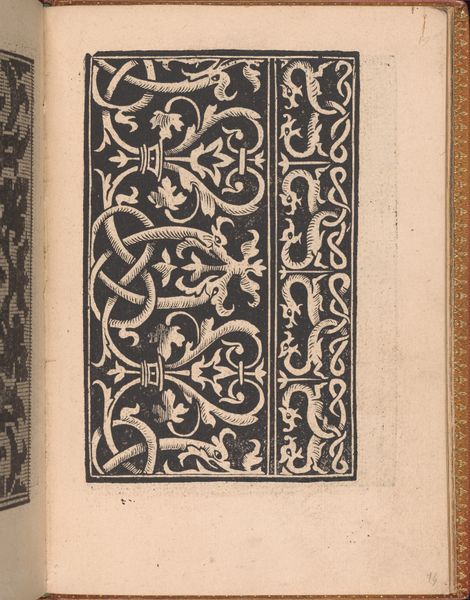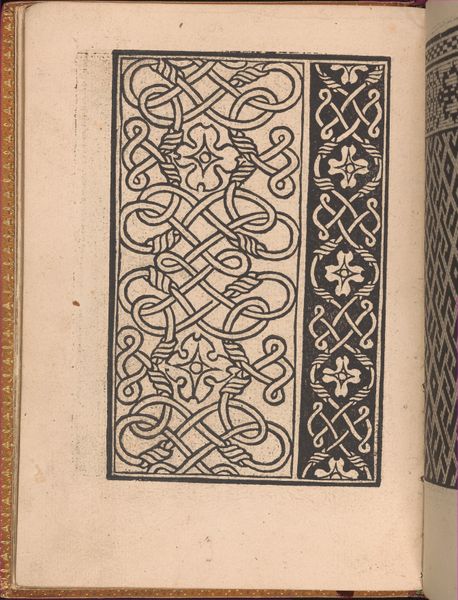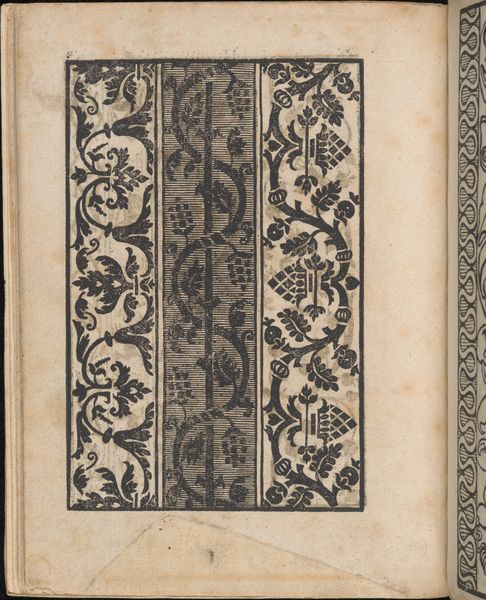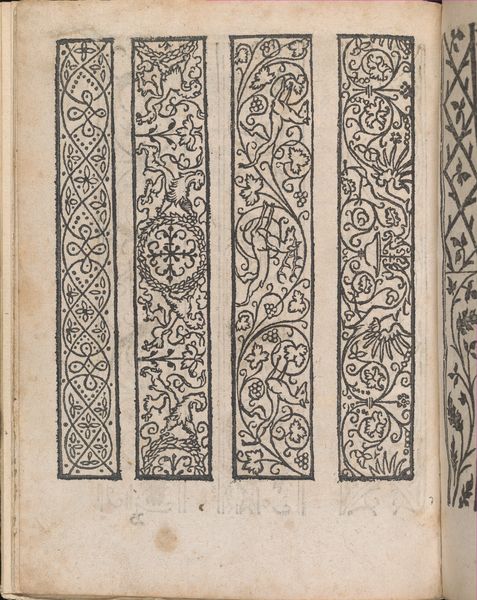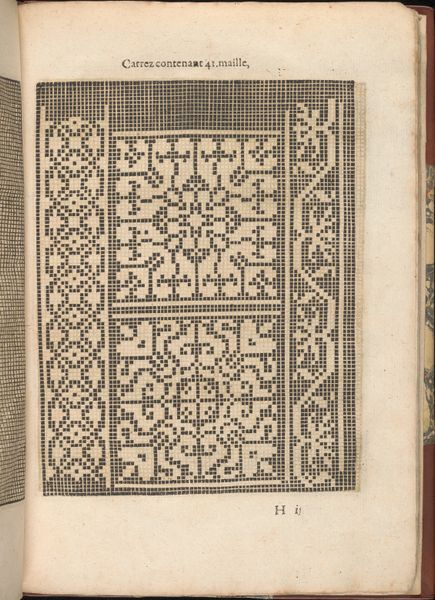
drawing, graphic-art, print, woodcut
#
drawing
#
graphic-art
# print
#
11_renaissance
#
linocut print
#
geometric
#
woodcut
Dimensions: Overall: 7 7/8 x 5 1/2 in. (20 x 14 cm)
Copyright: Public Domain
Curator: Here we have a page from Nicolò Zoppino's "Convivio delle Belle Donne," printed in 1532. It’s a compelling example of early 16th-century graphic art, a woodcut to be precise. Editor: Stark! That’s my immediate reaction. A rather bold juxtaposition of dense, geometric abstraction and… slightly tamer floral patterns. The sharp contrast really catches the eye. Curator: Indeed. Zoppino, working in Venice, was deeply embedded in a culture grappling with both humanist ideals and commercial opportunities. These designs served as pattern examples for artisans. The printing press allowed for widespread dissemination of styles. Editor: It’s fascinating how utilitarian this piece is, even as the composition feels so…resolved. The interplay between rigid lines and organic shapes is so elegant! One could interpret the knots, that dominant geometric element, as a symbol for complexity. What could such interlaced patterns evoke in Renaissance society? Curator: Complex interrelationships in society, perhaps. Networks of power, family ties. These patterns became fashionable because of their associative value. They might suggest status. Zoppino, in popularizing such motifs, facilitated their adoption amongst the upwardly mobile. Editor: And that vegetal element on the right! It seems so… delicate against the gridwork. The whole is like an illustration of harmony between logic and nature. How was such an intricate pattern transferred? The relief technique leaves nothing to hide. Every incisive mark of the wood cutter’s tool speaks to clarity of vision. Curator: It demands exacting precision in the woodcut. Consider its accessibility, however. This print’s very nature speaks of distribution, reaching many hands— impacting countless artists and influencing design throughout the region. Editor: Yes, the piece presents two sides. Beauty created through math, or free flowing shapes, distributed for commercial advantage and a social play for distinction. Interesting how, when looked at through one context or the other, this Renaissance page reveals two points for meditation. Curator: It also reinforces the idea that aesthetic beauty can be democratized. Graphic arts like this made stylish design more available to wider populations. It allowed new aesthetic visions to be rapidly adopted and adapted. Editor: And to imagine all those dialogues starting five centuries ago and stretching up until this one is delightful. A single page opening endless possibilities of thought.
Comments
No comments
Be the first to comment and join the conversation on the ultimate creative platform.
